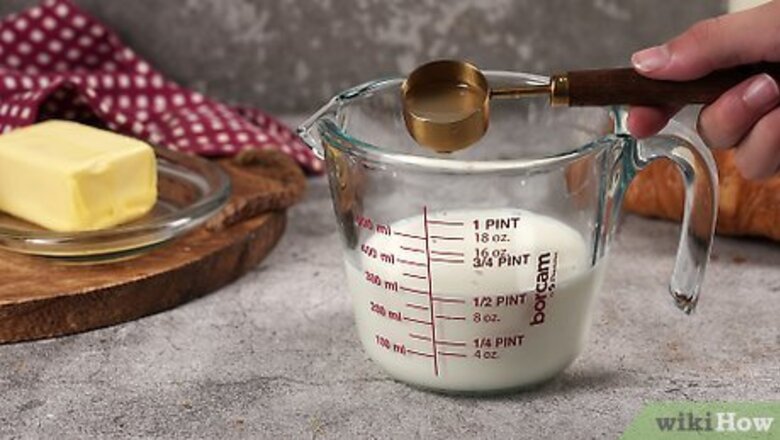
views
Adding Acids from Your Pantry to Milk
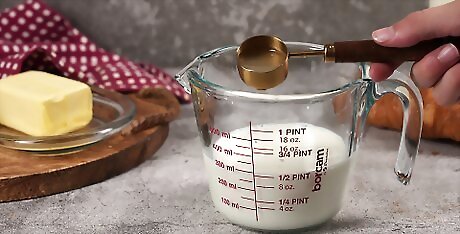
Pour 1 US tbsp (15 mL) of acidic liquid into 1 c (240 mL) of milk. White vinegar and lemon juice are the two most common and effective acidic liquids to use. Add the milk to a measuring cup, then measure out the lemon juice or white vinegar and add it to the cup. You can use whole milk or 2% lowfat milk. Skim milk has too little fat content to curdle properly. Many people prefer using lemon juice to curdle the milk, but white vinegar works just as well. Lemon juice may add a lighter note that cuts through the richness of the milk perfectly while still making it tangy. Multiply the recipe as needed. For instance, add 2 US tbsp (30 mL) of acid to 2 c (470 mL) of milk if you need 2 cups of buttermilk.
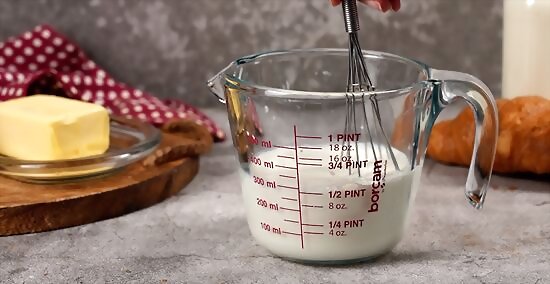
Stir the mixture and let it stand for 5-10 minutes. Just a quick stir with the measuring spoon will do. During the 5-10 minutes, the milk will begin to curdle. Small solids will begin to form as a result of adding the lemon juice or vinegar. The mixture will begin to thicken slightly, but will never become as thick as real buttermilk. But it will work just as well in your recipe!
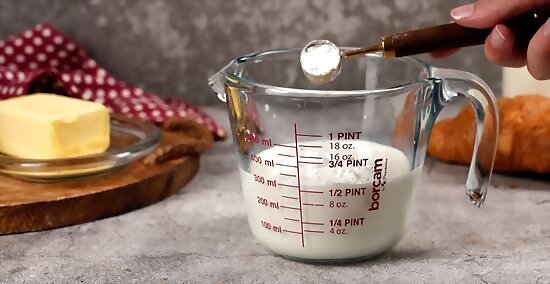
Stir 1.75 tsp (8.6 mL) of cream of tartar into 1 c (240 mL) of milk instead. As with the lemon juice or white vinegar, allow the stirred mixture to sit for 5-10 minutes. It will thicken slightly and curdle during this time.

Use your substitute buttermilk as you would the real thing. Add the mixture, curdles and all, in the amount needed for your recipe. No one will ever know the difference! Try out some of the following recipes: buttermilk pancakes buttermilk biscuits buttermilk fried chicken buttermilk salad dressing buttermilk scones
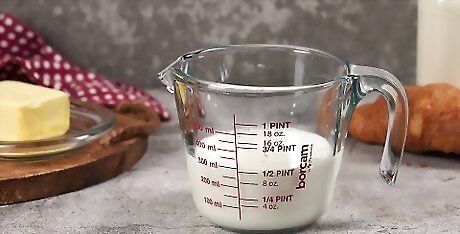
Learn to make real buttermilk if you’re interested in the process. Real buttermilk is a by-product of making butter from cream. A culture is added to the cream, and it helps separate the milk fats from the leftover liquids. These leftover liquids are real buttermilk. So, by learning to make real buttermilk, you’ll also learn how to make real butter!
Substituting Items Like Yogurt or Sour Cream
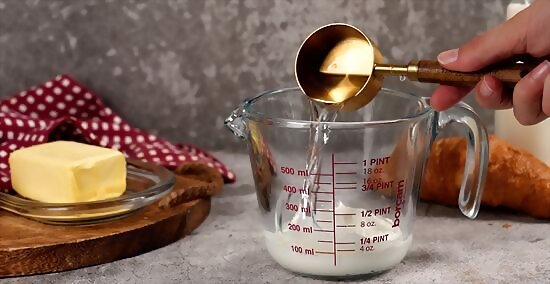
Mix 0.75 c (180 mL) of plain yogurt and 0.25 c (59 mL) of water. Stir them together until they’re combined, and you’ll have a thick, tangy liquid that approximates the texture and taste of buttermilk. You can use whole or 2% milk instead of water to get an even richer texture, especially if you’re using fat-free yogurt. If you use a thicker yogurt like Greek yogurt, you may need to add a bit more of the liquid to get the consistency you desire.
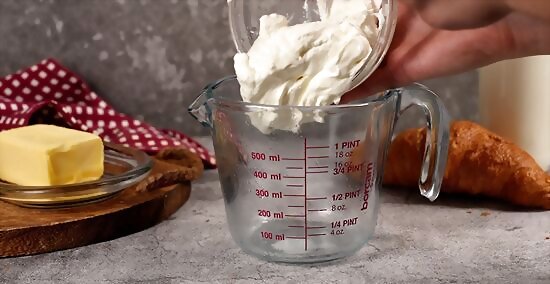
Try sour cream and water in the same 3:1 ratio. If you don’t have plain yogurt in the fridge, mix up 0.75 c (180 mL) of sour cream with 0.25 c (59 mL) of water instead. Stir them up until you get a buttermilk-like consistency. Like with yogurt, you can use milk instead of water for extra richness, especially with a low-fat sour cream.
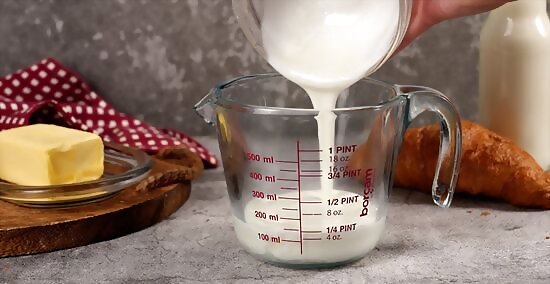
Combine kefir and water instead at a roughly 3:1 ratio. Kefir will work just as well as yogurt or sour cream. However, its consistency varies a bit more, so you may need to add a bit more or less than 0.25 c (59 mL) of water to 0.75 c (180 mL) of kefir to get a buttermilk consistency. Start with a little less water, stir to combine, and add more water to thin the mixture as needed. Once again, you can use milk instead of water if you wish.
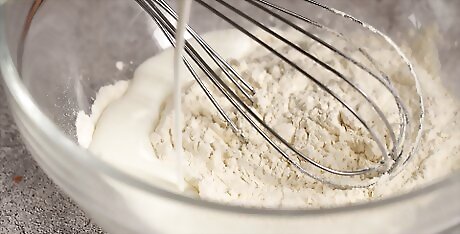
Give thinned yogurt, sour cream, or kefir a try in your recipes. Though these quick substitutions might not offer you the exact same taste or versatility as real buttermilk, they are quick and usually turn out well in recipes. Give them a try and see how they compare to using vinegar or lemon juice with milk. Set up a fun taste test by making 3 batches of buttermilk pancakes—one with real buttermilk, one with vinegar/lemon juice/cream of tartar and milk, and one with sour cream/yogurt/kefir and water. Then invite some friends over and dig in!















Comments
0 comment